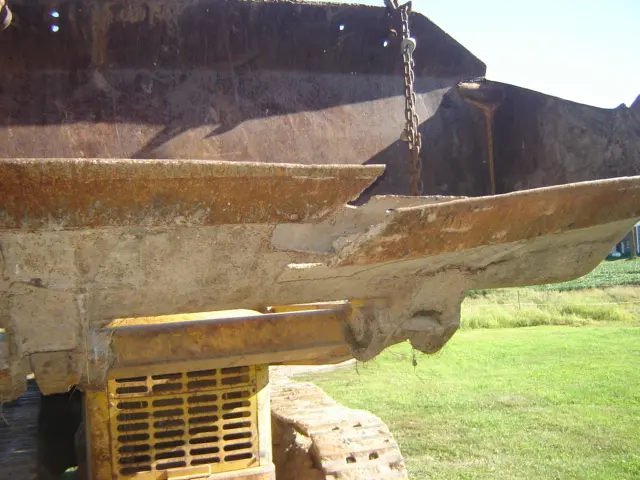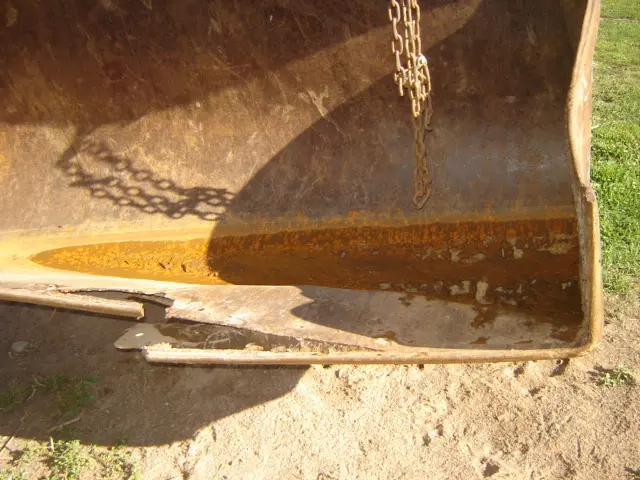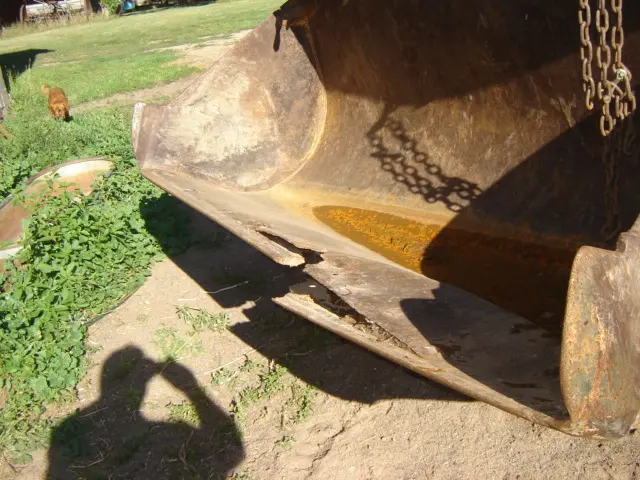


I wonder what steel the bucket is made of? Did cat make it from a high strength- high abrasive steel? Or did cat just use
regular mild steel.
The first thing to do is to take a grinder and hit the bucket with it and watch the spark stream, then compare that to the stream you get from a known piece of mild steel. While the curved part of the bucket may have been made from something like T-1 or AR steel, I'd have doubts as they're both kind of a bear to form without cracking. You could probably get by with a welded in section of mild steel to replace the cracked and torn area.
I've seen some cutting edges welded on but more commonly they're bolted on. If welded on, it should be done with an E 8018 electrode.
As far as the side pieces go, you could cut a section out and replace it with a T-1 or AR chunk. .or just go ahead and hard face the edges and back a few inches with a good hard facing electrode. Cro-Mang comes to mind right off.
It's been quite a few years since I rebuilt a bucket but that was the procedure we used in the mines.
Considering you mentioned prior repair work and the fact a lot of these type of machines are getting scrapped currently it may be more cost effective to pickup a good used bucket.
Theres a great condition 4 in 1 off a 977L near me but shipping would cost more.
You have a wonderful day. Best wishes. Deas Plant.